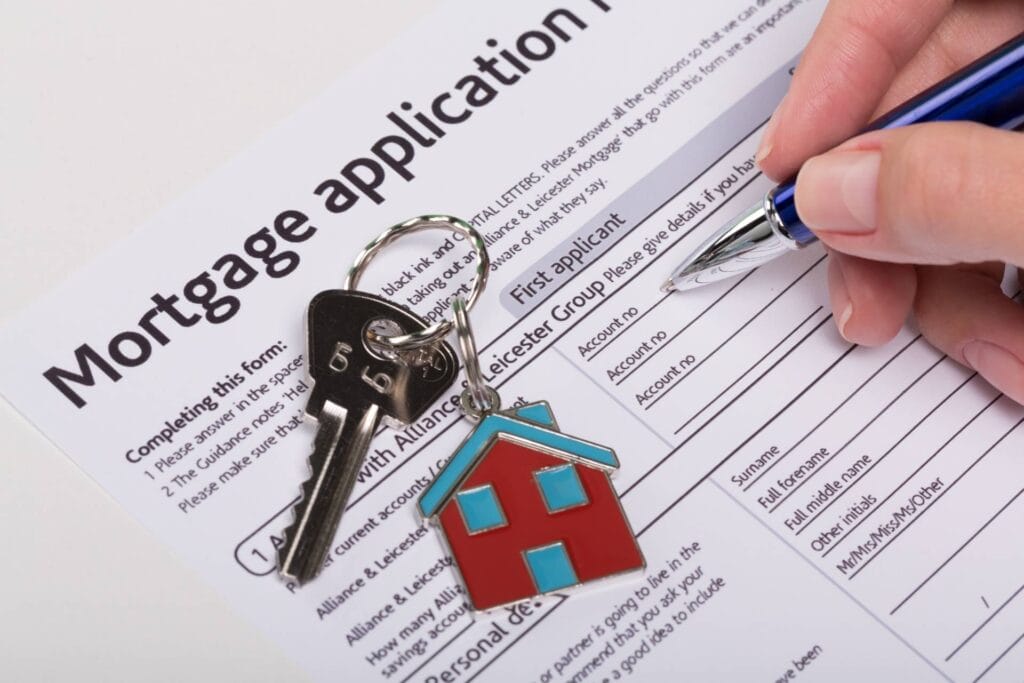When pouring over your mortgage application, there are many factors that lenders and agents consider. Credit scores are probably the most famous, but there are other factors to review, including a borrower’s “DTI,” also known as “DTI ratio.” Unfortunately, many borrowers have a DTI problem.
Short for “debt-to-income ratio,” your DTI is a numerical representation of the amount you owe compared to the amount you earn. Usually calculated on a monthly basis, DTI can be a strong indication of a borrower’s ability to repay the loan.
Suppose you earn $8,000 every month, but also have monthly debt payments totaling $2,000. In this example, your DTI would be 25%. (Yes, this “ratio” is expressed as a percentage.) If you had $4,000 in debt payments, your DTI would be 50%.
This can be an important number for lenders, who generally like to see low DTIs from borrowers. This is because a high DTI increases the chance of a loan default. Statistically speaking, those with a high DTI are more likely to miss payments. This makes sense, as people whose income is largely consumed by debt payments have little wiggle room; if they lose their income (a layoff, for example) or experience financial hardships (from medical bills, home damage, a divorce, etc), they may be unable to pay.
Most lenders prefer that you have a DTI less than 45%, although some may allow for debt ratios as high as 50%. The exact percentage depends on the lender, the loan product, your credit score, downpayment, and many other factors. But one factor is consistent: the lower your ratio, the better your chances of getting approved for a loan. A low DTI can also result in a better interest rate and loan terms.
Ways to Solve the DTI Problem
If you have been rejected for a loan because of a high debt-to-income ratio, your home-loan options are not over. There are many strategies that can help you break the roadblock created by a high DTI. Some of them specifically address your debt load, while other help you secure a mortgage even if your debt load stays the same.
Paying Off Debt to Qualify
This is the most simple and, for many, the most obvious option for overcoming the high-DTI problem. However, it’s also one of the most difficult. If your high debt load is keeping you from securing an affordable mortgage, you may be able to reduce your overall burden by paying off bills, closing lines of credit, and reducing the amount you owe every month.
The first step, however, is to stop building a debt problem. While you work through this strategy, avoid credit cards and other debts, such as car loans.
Once you stop creating more debt, you can work towards lowering your debts by paying off small debts. Perhaps there is a credit card that can be knocked out, or perhaps you can afford to pay off a vehicle. By eliminating a few small loans, you may be able to reduce your DTI from, say, 50% to 40%, which should help you qualify for a variety of financing options.
Buying Down the Interest Rates
If your DTI is small enough that you have been approved for a loan, yet it’s large enough to trigger a high interest rate, you may be able to use discount points to make your loan more affordable. Buying down the interest rate is a common solution for problems created by high DTIs, and while it’s more expensive upfront, it can result in greater affordability longterm.
With discount points, you essentially pay an upfront fee in exchange for a lower interest rate. The exact amount you’ll have to pay, and how much you’ll be discounted, will vary by the lender, but usually an amount equal to 1% of the loan will bring a significant reduction in total interest. Discount points are best used when you expect to keep the mortgage for a long time and have money in savings that can be put towards the interest reduction.

Use a Non-Occupant Co-Borrower
If you are struggling to meet the DTI needs for a specific loan, using a non-occupant co-borrower could be a solution. With this option, another individual signs the mortgage document and agrees to be financially responsible for the payments if you are unable to pay. This is a useful way for lenders to reduce risk, as the second signer can help spread out the chances of mortgage default.
With a co-borrower, you may be able to use all of their income, which may reduce (depending on that person’s debt load) the DTI listed on the mortgage documents. Some mortgage products have different rules for who can be a non-occupant co-borrower (only family, for example) but for many loans a good friend or distant family member could co-sign.
Purchase Prepaid Mortgage Insurance
Mortgage insurance is a pre-paid policy that protects the lender in case of mortgage default. Essentially, if the borrower is unable to pay and defaults on the loan, mortgage insurance compensates the lender. Although it’s paid for by the borrower, mortgage insurance protects the lender; that might seem like a raw deal until you think about the results: more available mortgages.
By reducing risk to lenders, mortgage insurance allows more loans to be written. If you subscribe to the theory that homeownership is an important part of financial wellness, then you could easily argue that mortgage insurance is a good thing.
Arguments aside, purchasing prepaid mortgage insurance is one of the most useful strategies for solving a problem created by high DTI.
Don’t Let a DTI Problem Stop Your Purchase!
If you have been rejected for a loan because of a high DTI, or if your loan option came with a high interest rate, let us take another look at your application. With a common-sense approach to mortgage underwriting, decades of experience in the industry, and multiple loan resources, we may be able to secure a better loan for your next home purchase!


